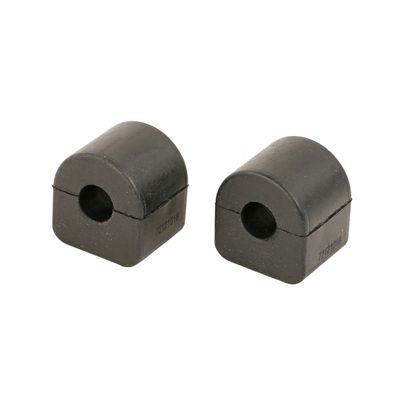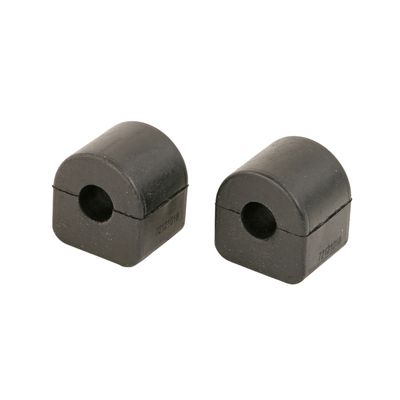Answer
Aug 15, 2024 - 02:34 PM
The MOOG K201972 sway bar bushings are typically made from high-quality synthetic materials designed to provide durability, flexibility, and resistance to wear. The primary materials used in these bushings include:
-
Thermoplastic Elastomer (TPE) or Polyurethane:
- MOOG sway bar bushings are often made from a thermoplastic elastomer (TPE) or polyurethane. These materials are known for their toughness, flexibility, and resistance to chemicals, oil, and road debris. They provide a good balance between stiffness and compliance, allowing for effective vibration dampening and noise reduction while maintaining the necessary rigidity to control body roll.
-
Synthetic Rubber:
- In some cases, synthetic rubber is used, which offers excellent resistance to wear and tear, as well as the ability to withstand extreme temperatures. Rubber bushings are generally softer and provide better vibration dampening compared to polyurethane, but they may not last as long in harsh conditions.
- Durability: Both polyurethane and TPE are highly durable, offering long-lasting performance even under tough driving conditions.
- Resistance to Degradation: These materials resist degradation from exposure to elements like oil, grease, salt, and other road contaminants.
- Performance: They offer the right balance between stiffness (for handling performance) and flexibility (for comfort and noise reduction).
The choice of material helps MOOG sway bar bushings provide enhanced durability and maintain their performance over the life of the vehicle, contributing to better handling, reduced noise, and overall improved ride quality.





Add New Comment